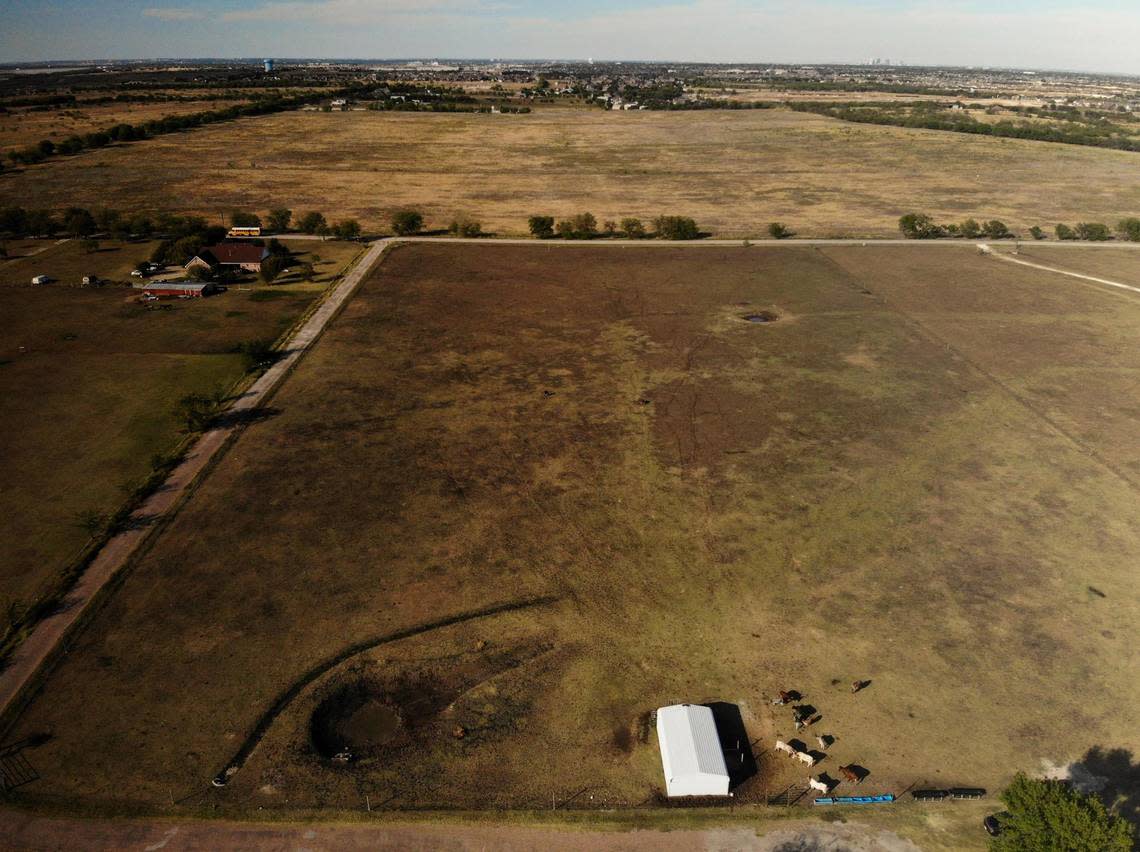What’s next for this Fort Worth neighborhood with horses, sheep and llamas? 1,040 homes
Kevin Albers’ neighborhood is the kind of place where your neighbor’s rooster can substitute for your morning alarm.
Most of the houses along Longhorn Trail just east of West Cleburne Road sit on lots of at least two acres, but that’s starting to change as developers buy up large swaths of land to turn into subdivisions.
Residents said they knew development would come eventually, but some worry about what’s being lost as more dense housing is built next to land that is home to sheep, horses, longhorns and llamas.
Fort Worth annexed and rezoned around 300 acres across the street from Albers’ home on Oct. 11 to make way for a 1,040-home development with lots ranging from 5,000 feet to half an acre.
The land had previously been a finishing pasture for cattle, but was sold to Arizona-based real estate investment company Walton Global at the end of 2021.
This is Walton’s second major development in the area with the 3,800 home Rock Creek Ranch community planned for an area around Tarleton State University’s Fort Worth campus.

Walton originally planned for more homes on the Sewell tract, each with a 5,000-foot lots more common in neighborhoods like Fairmont than rural communities, but it revised the plan after meeting with neighbors and city council member Jared Williams, a representative from D.R. Horton said a recent city council meeting.
Arlington-based D.R. Horton will be building the homes in the subdivision.
Homes on land across the existing ones on Longhorn Trail will sit on half-acre lots, roughly the size of half a football field. The development will transition to smaller lots farther north.
Something is better than nothing, said Ryan Ray, a former Crowley school board member who has lived on 15 acres in the neighborhood for six years.
D.R. Horton also committed to expanding the roads to accommodate the increased traffic.
Traffic has been a major complaint for residents in far north Fort Worth where an influx of housing developments has choked two lane county roads with traffic, and forced schoolchildren to walk to school along bar ditches to avoid getting hit by cars.
Ray said none of his neighbors had any illusions they could stop development from coming, but they wanted to make sure the houses coming in match the community.
Williams, whose district includes the newly annexed acreage, acknowledged the tension between the development and traditionally rural areas, but said it was important for residents to have a say to address the impact of development on their neighborhood.
Developing in the sweet spot
Ray said he moved to his neighborhood to get the best of both worlds.
“It’s 20 minutes to downtown Fort Worth and I got 15 acres that didn’t cost me $2 million,” he said.
He suspected the area would get more popular after the completion of the Chisholm Trail Parkway, but assumed most of the development would be closer to Benbrook Lake.
Albers, who moved to the area from a more dense neighborhood in April, said the rural character convinced him to buy there in the first place.
“I like going out in my backyard when it’s night time and it’s dark,” he said.
Walt Haydon, a 71-year old retiree who has lived in the neighborhood for 20 years, said the thing he loves most about his neighborhood is how much it reflects what he sees as Texas culture.
All the houses are on large plots, most of his neighbors have animals like sheep and horses, and neighbors make sure to take care of their own properties as well as each other, he said.
Worries about density
Albers argued dense neighborhood subdivisions won’t mesh well with rural farm land.
Some of his neighbors raise horses, cattle, sheep, and even llamas.
“It’s farm animals. Not cats and dogs,” he said.
Haydon said he was happy the developer agreed to work with the city to increase road capacity, but worried more development would exacerbate traffic problems.
He pointed to the intersection of Eagle Drive and South Beverley Street, where he said residents have to wait through three traffic light cycles to get out of their neighborhood during morning rush hour.
“Where are all those cars going to go?” he asked.
Haydon noted some of his neighbors are choosing to sell their homes to get away from incoming development.
